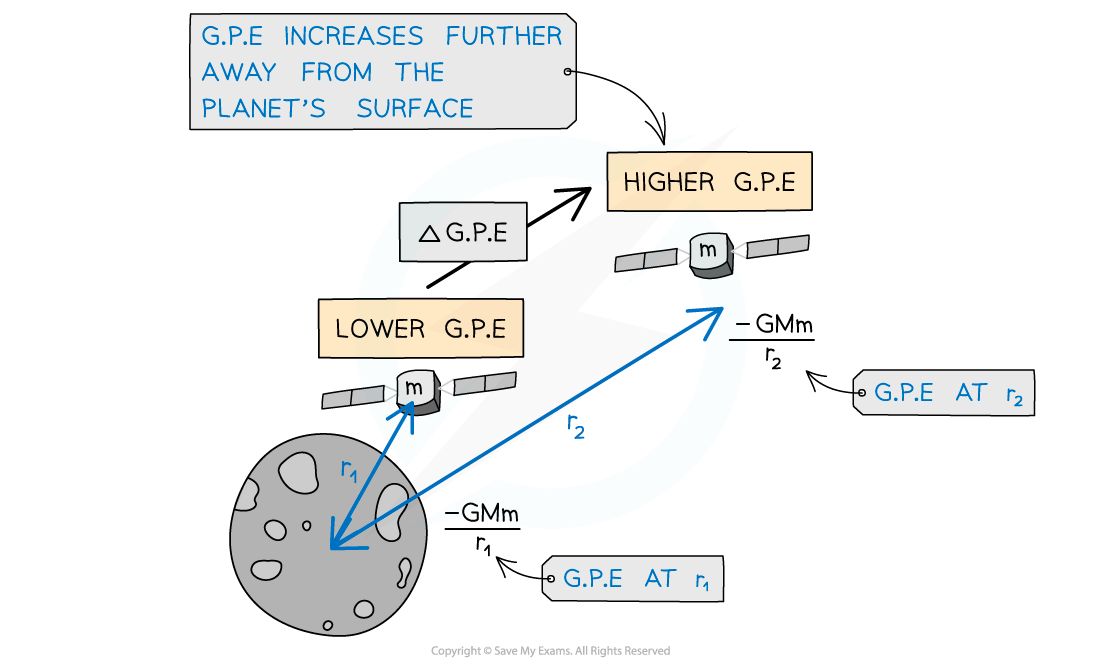Work Done on a Mass
- When a mass is moved against the force of gravity, work is done
- The work done in moving a mass m is given by:
∆W = m∆V
- Where:
- ∆W = change in work done (J)
- m = mass (kg)
- ∆V = change in gravitational potential (J kg-1)
- This change in work done is equal to the change in gravitational potential energy (G.P.E)
- When V = 0, then the G.P.E = 0
- The change in G.P.E, or work done, for an object of mass m at a distance r1 from the centre of a larger mass M, to a distance of r2 further away can be written as:

- Where:
- M = mass that is producing the gravitational field (eg. a planet) (kg)
- m = mass that is moving in the gravitational field (eg. a satellite) (kg)
- r1 = first distance of m from the centre of M (m)
- r2 = second distance of m from the centre of M (m)
- Work is done when an object in a planet's gravitational field moves against the gravitational field lines ie. away from the planet

Gravitational potential energy increases as a satellite leaves the surface of the Moon
Maths Tip
- Multiplying two negative numbers equals a positive number, for example:

Worked example
A spacecraft of mass 300 kg leaves the surface of Mars to an altitude of 700 km.Calculate the work done by the spacecraft.Radius of Mars = 3400 km
Mass of Mars = 6.40 × 1023 kg
Step 1: Write down the work done (or change in G.P.E) equation

Step 2: Determine values for r1 and r2
r1 is the radius of Mars = 3400 km = 3400 × 103 m
r2 is the radius + altitude = 3400 + 700 = 4100 km = 4100 × 103 m
Step 3: Substitute in values

ΔG.P.E = 643.076 × 106 = 640 MJ (2 s.f.)
Exam Tip
Make sure to not confuse the ΔG.P.E equation with
ΔG.P.E = mgΔh
The above equation is only relevant for an object lifted in a uniform gravitational field (close to the Earth’s surface).The new equation for G.P.E will not include g, because this varies for different planets and is no longer a constant (decreases by 1/r2) outside the surface of a planet.


